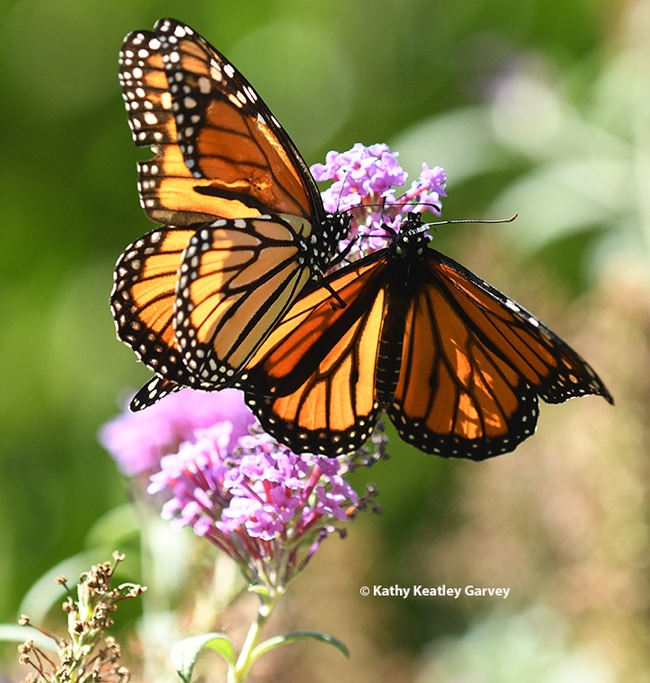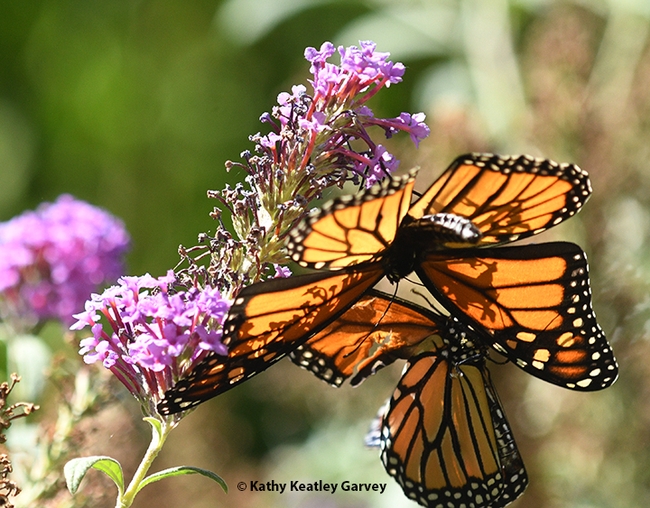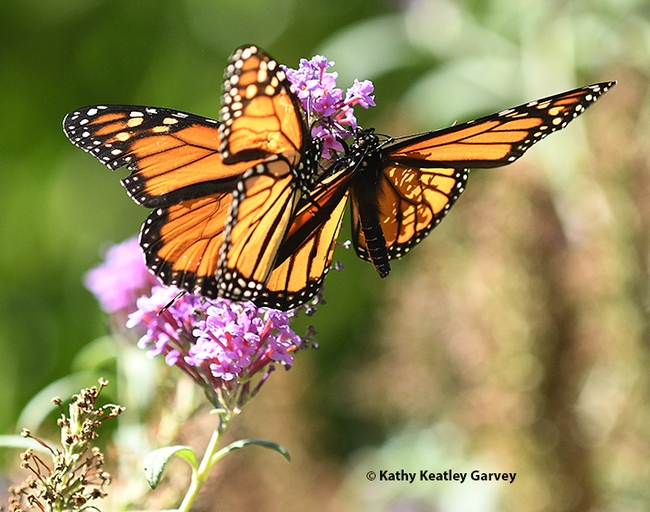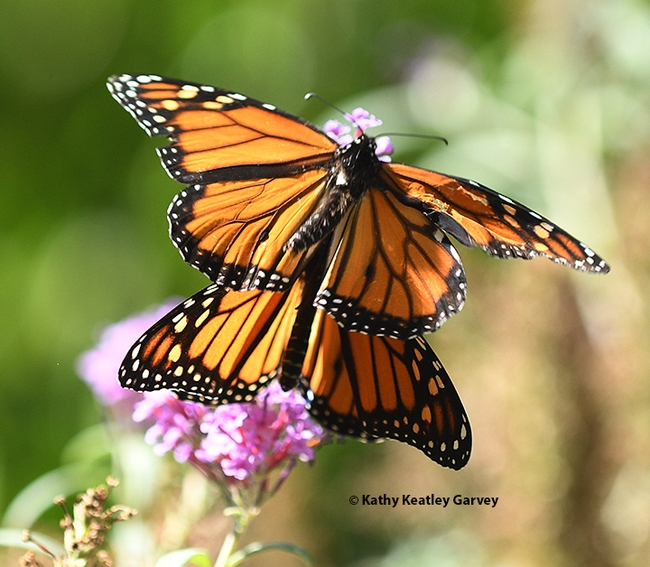Question: What's better than seeing a monarch butterfly?
Answer: Seeing two monarch butterflies sharing the same blossom on a butterfly bush!
Scenario: Monarchs (Danaus plexippus) from the Pacific Northwest are fluttering through Vacaville, Calif. and stopping in our pollinator garden for some flight fuel before heading off to their overwintering sites along coastal California.
Background: I am watching for tagged butterflies from the migratory monarch project of Washington State University entomologist David James. (After all, one tagged by his citizen scientist Steven Johnson of Ashland, Ore., on Aug. 28, 2016, fluttered into our yard seven days later. James said it flew 285 miles in 7 days or about 40.7 miles per day.)
Menu: In our pollinator garden, the flight fuel includes nectar from the Mexican sunflower (Tithonia rotundifola), tropical milkweed (Asclepias curassavica), butterfly bush (Buddleia davidii), and Zinnias, a genus of plants of the tribe Heliantheae within the family Asteraceae.
Action: On Sept. 27, a male monarch touches down on our butterfly bush and begins sipping nectar. Soon, another joins him.
The two monarchs engage in what appears to be a territorial battle. It's a kaleidoscope of orange and black wings, tumbling, wobbling, recovering.
And then, wings up! The monarchs take flight.
Attached Images:

Two migrating monarchs land on a butterfly bush in Vacaville, Calif. to sip some nectar. (Photo by Kathy Keatley Garvey)

The monarchs engage in what appears to be a territorial battle. (Photo by Kathy Keatley Garvey)

A kaleidoscope of orange and black as the two monarchs seek the same blossom. (Photo by Kathy Keatley Garvey)

Wings up! The monarchs take flight. (Photo by Kathy Keatley Garvey)